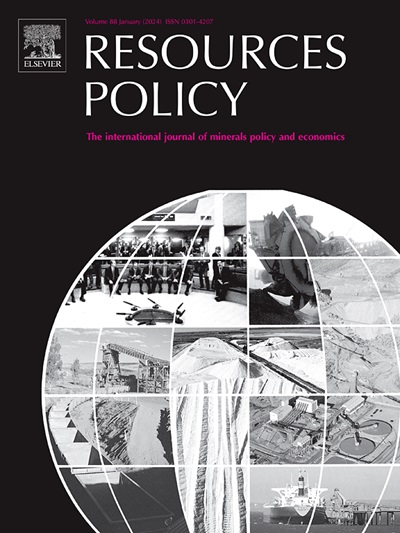Impact of news and social media sentiments on rare earth investments
IF 10.2
2区 经济学
0 ENVIRONMENTAL STUDIES
引用次数: 0
Abstract
In recent years, investing in rare earth metals has increased significantly due to its importance in producing renewable energy. Accordingly, a growing body of literature investigates the connectedness between rare earth equities and other financial markets, though very little is known about the volatility dynamics of this new asset class. Our study extends such scarce literature by employing the heteroscedastic auto-regressive (HAR) model to explore the volatility pattern of rare earth ETF. Later, we extend the baseline HAR process to explore the role of news and social media sentiment in volatility forecasting. Our empirical analysis uses the sentiment data provided by the Thomson Reuters MarketPsych Indices (TRMI) to examine whether investor sentiments collected from various media sources (i.e. traditional news media and social networking sites) would have a heterogeneous impact on the volatility predictions. Overall, our results indicate that both social and news media influence the realized volatility of rare earth equities. More importantly, this effect is positive suggesting that higher media sentiment causes higher volatility. We further observe that the extended HAR models, which include different sentiment measures such as Buzz and Sentiment, tend to outperform the baseline HAR model. Our analysis also concludes that the Buzz index has more predictive contents relative to the Sentiment index.
新闻和社交媒体情绪对稀土投资的影响
近年来,由于稀土在生产可再生能源方面的重要性,对稀土金属的投资大幅增加。因此,越来越多的文献研究了稀土股票与其他金融市场之间的联系,尽管人们对这种新资产类别的波动性动态知之甚少。本文运用异方差自回归(HAR)模型对稀土ETF的波动模式进行了拓展。随后,我们扩展了基准HAR过程,以探索新闻和社交媒体情绪在波动率预测中的作用。我们的实证分析使用汤森路透市场心理指数(TRMI)提供的情绪数据来检验从各种媒体来源(即传统新闻媒体和社交网站)收集的投资者情绪是否会对波动率预测产生异质影响。总体而言,我们的研究结果表明,社会媒体和新闻媒体都影响稀土股票的实现波动率。更重要的是,这种效应是正的,表明媒体情绪越高,波动性越大。我们进一步观察到,扩展的HAR模型,其中包括不同的情绪度量,如Buzz和sentiment,往往优于基线HAR模型。我们的分析还得出结论,相对于情绪指数,Buzz指数具有更多的预测内容。
本文章由计算机程序翻译,如有差异,请以英文原文为准。
求助全文
约1分钟内获得全文
求助全文
来源期刊

Resources Policy
ENVIRONMENTAL STUDIES-
CiteScore
13.40
自引率
23.50%
发文量
602
审稿时长
69 days
期刊介绍:
Resources Policy is an international journal focused on the economics and policy aspects of mineral and fossil fuel extraction, production, and utilization. It targets individuals in academia, government, and industry. The journal seeks original research submissions analyzing public policy, economics, social science, geography, and finance in the fields of mining, non-fuel minerals, energy minerals, fossil fuels, and metals. Mineral economics topics covered include mineral market analysis, price analysis, project evaluation, mining and sustainable development, mineral resource rents, resource curse, mineral wealth and corruption, mineral taxation and regulation, strategic minerals and their supply, and the impact of mineral development on local communities and indigenous populations. The journal specifically excludes papers with agriculture, forestry, or fisheries as their primary focus.
 求助内容:
求助内容: 应助结果提醒方式:
应助结果提醒方式:


